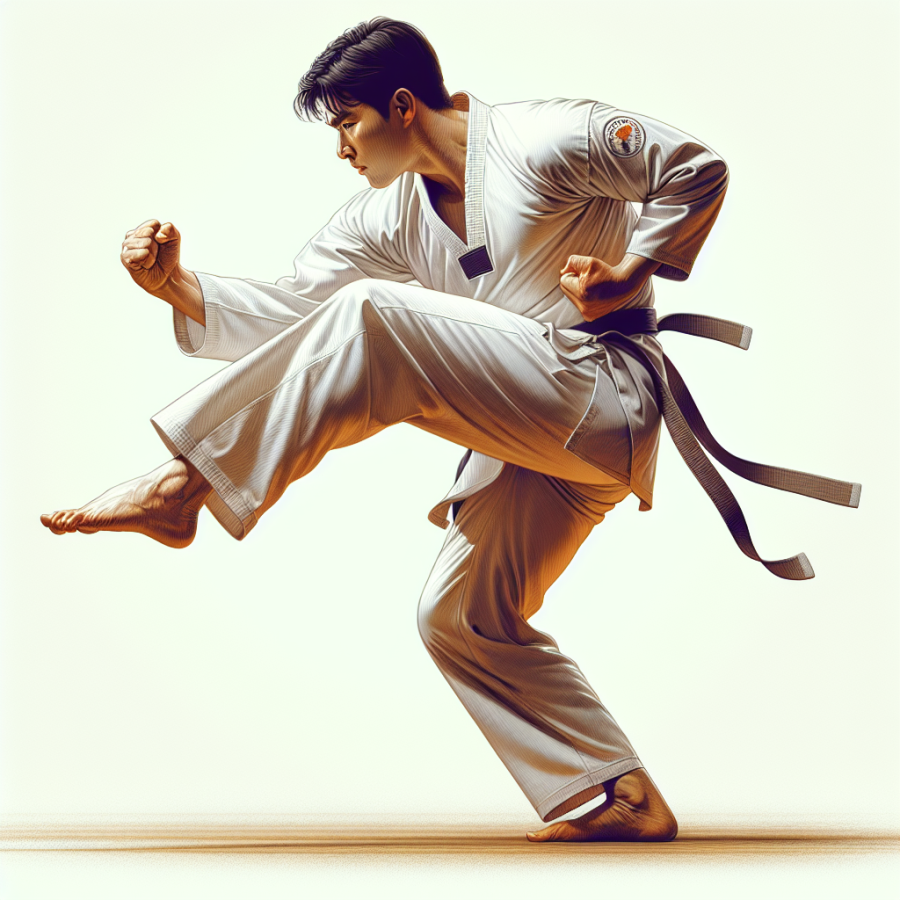Mastering the Techniques and Training Methods of Tang Soo Do
Tang Soo Do, a Korean martial art known for its powerful techniques and graceful movements, requires consistent practice and dedication to achieve mastery. Students of this discipline must focus on perfecting a variety of techniques and participate in rigorous training sessions designed to enhance both their physical capabilities and mental discipline.
The first step to mastering Tang Soo Do techniques is to develop a strong foundation in the basic stances and movements. These include the front stance, horse stance, and back stance, each serving as a fundamental position from which various techniques are executed. Equally essential are the blocks, punches, and kicks that constitute the arsenal of Tang Soo Do. The low block, high block, and inside-outside block are regularly practiced to efficiently deflect attacks, while the variety of punches and kicks such as the front kick, roundhouse kick, and sidekick highlight the dynamic nature of Tang Soo Do.
Training methods often incorporate forms, known as hyungs, which are sequences of movements that simulate combat against multiple adversaries. Practicing these forms improves coordination, balance, and the ability to flow smoothly from one technique to another. Students gradually learn to perform forms with precision and fluidity, ultimately enhancing their understanding of the practical applications of each movement.
Sparring, or free fighting, is another crucial aspect of training. This controlled combat experience allows practitioners to apply their techniques in a more dynamic and unpredictable environment, similar to a real-life self-defense scenario. Safety gear is typically worn to minimize the risk of injury, and respect for one's partner is paramount. Through sparring, practitioners develop better reflexes, timing, and distance control.
Conditioning exercises are necessary to build the strength and endurance required in Tang Soo Do. Training might include push-ups, sit-ups, and leg raises, as well as plyometric exercises like jumping squats and lunges to enhance explosive power. Cardiovascular fitness is also a priority; running, skipping rope, and interval training help maintain a high level of stamina.
Mental training is equally important in Tang Soo Do. Meditation and breathing techniques are practiced to cultivate focus, self-control, and a calm mind. This mental discipline is crucial during both training and competition, where the ability to remain centered and strategic can make a significant difference in a practitioner's performance.
Instructors of Tang Soo Do play a key role in guiding students through these techniques and training methods.
Read also:
The Strength and Versatility of Rope: Heritage to Modern Use
Exploring the Rich History and Philosophy Behind Tang Soo Do
Tang Soo Do, a traditional Korean martial art, boasts a rich historical tapestry woven with philosophy, technique, and culture that has been passed down through generations. To fully appreciate the depth of this discipline, it is essential to delve into the roots from which it originated, the philosophical principles that guide its practice, and the lineage of masters who have shaped its evolution.
The history of Tang Soo Do can be traced back to ancient Korea, where it absorbed influences from neighboring countries and established martial arts such as Chinese Kung Fu and Japanese Karate. Its origins are often associated with the indigenous Korean martial arts that date back to the Three Kingdoms period (57 BC – 668 AD). Historical records from this era, such as the mural paintings in the royal tombs of the Goguryeo Dynasty, depict figures practicing martial art techniques. These ancient practices eventually evolved, and by the mid-20th century, Tang Soo Do emerged as a distinct and formalized martial art system.
The founder of modern Tang Soo Do is commonly recognized as Grandmaster Hwang Kee. He was a martial artist with a vast knowledge of both the Korean fighting style, Soo Bahk Do, and the Chinese martial art of Kung Fu. Hwang Kee developed a unique style that combined these disciplines, leading to the creation of what we now know as Tang Soo Do. Despite the multitude of influences, Tang Soo Do maintains its Korean identity, with its techniques, terminology, and philosophies deeply rooted in Korean tradition.
When examining the philosophy of Tang Soo Do, one cannot overlook the Five Codes of Tang Soo Do and the Seven Tenets that underscore its teachings. The Five Codes consist of loyalty to the country, obedience to parents, trustworthiness among friends, courage in battle, and justice in action. These demonstrate the value placed on morals and ethics within the discipline. The Seven Tenets—integrity, concentration, perseverance, respect and obedience, self-control, humility, and an indomitable spirit—guide the personal development of every practitioner, instilling discipline and building character.
The practice of forms, or 'hyung,' is a core element of Tang Soo Do, and it is in these sets of movements where the history and philosophy of the martial art are most vividly expressed. Each form traces a lineage back to different historical figures and eras, serving as a physical manifestation of Tang Soo Do's enduring heritage.




